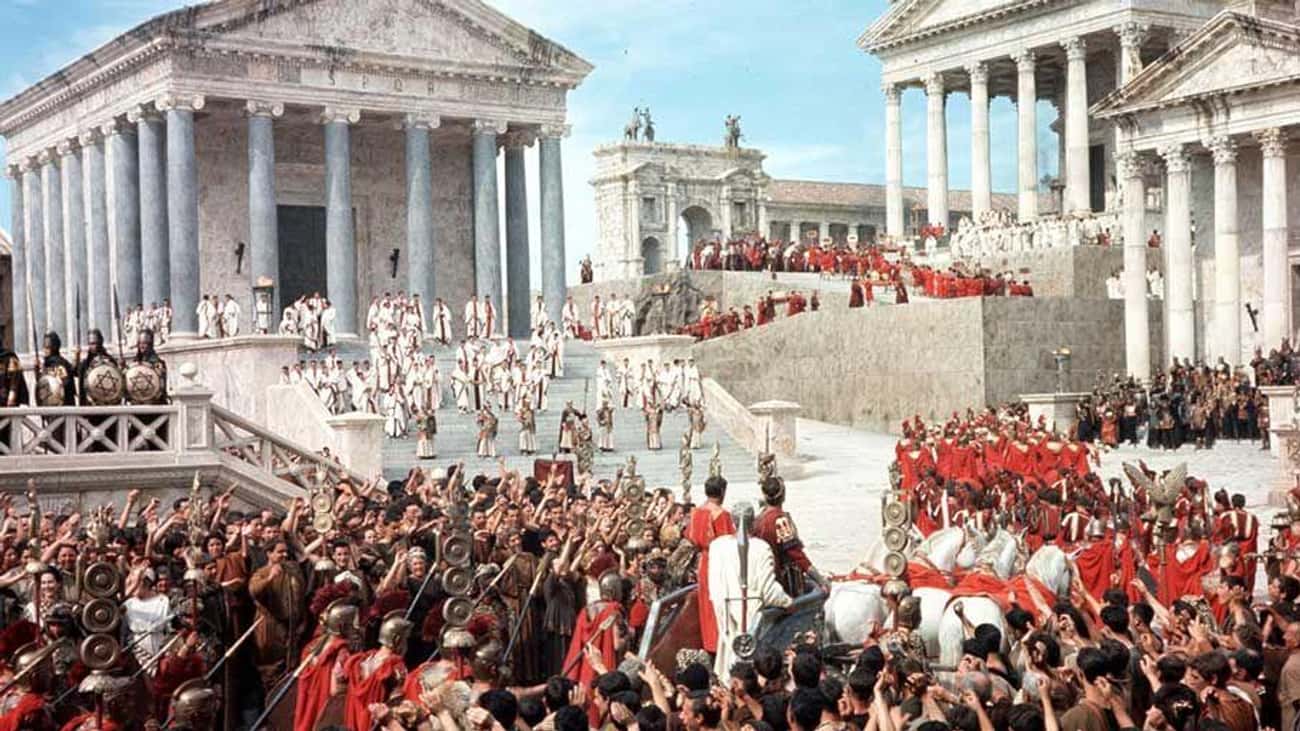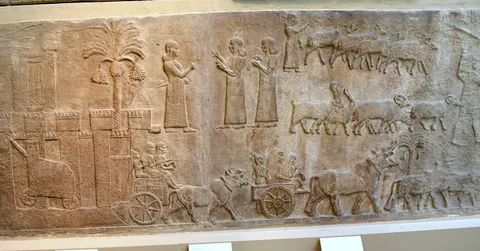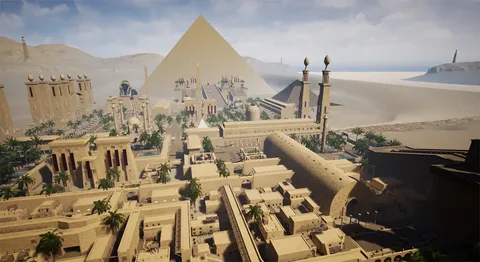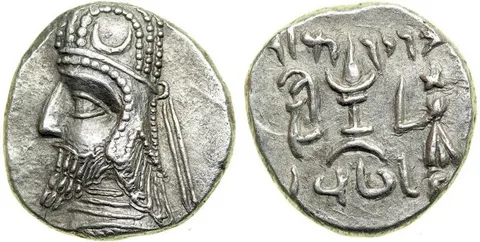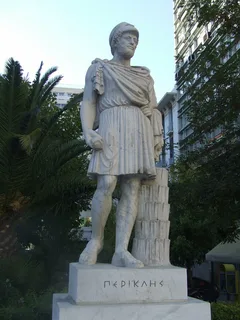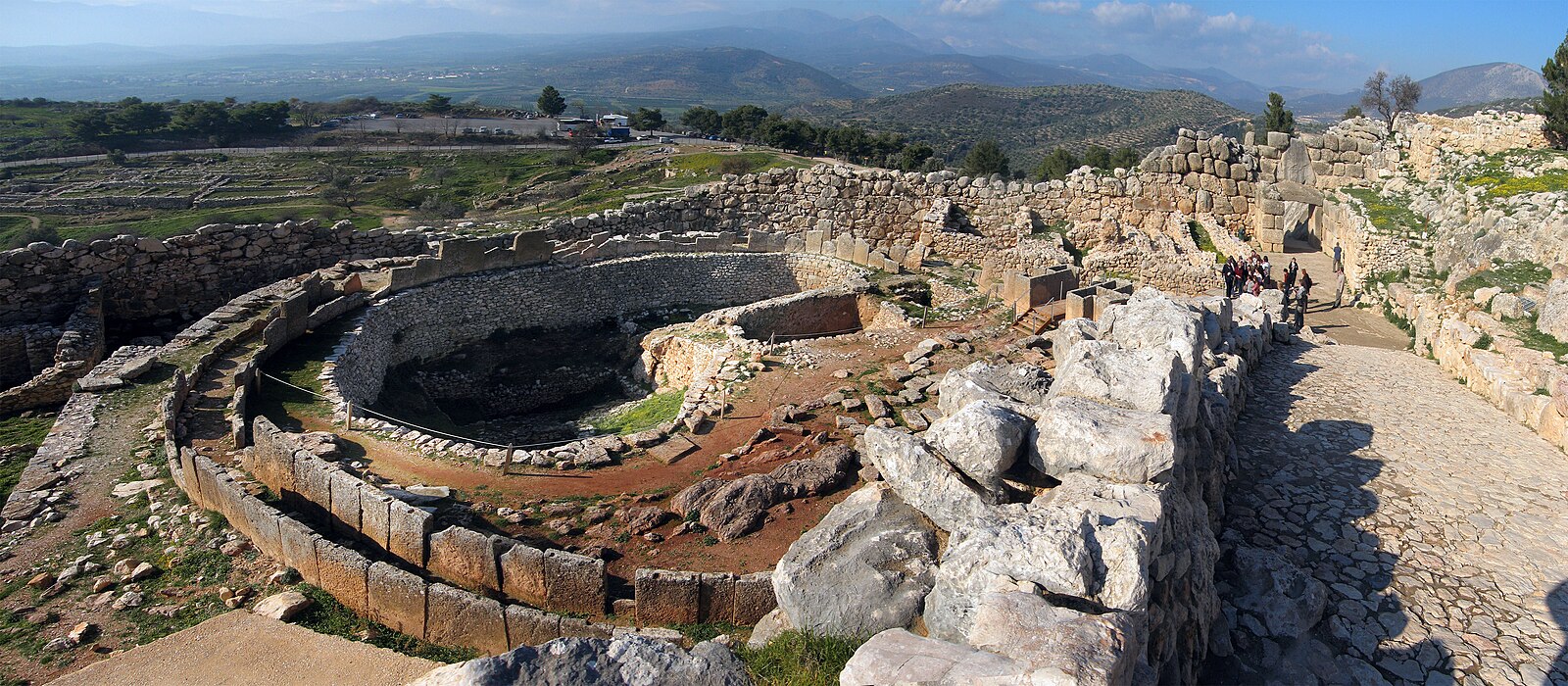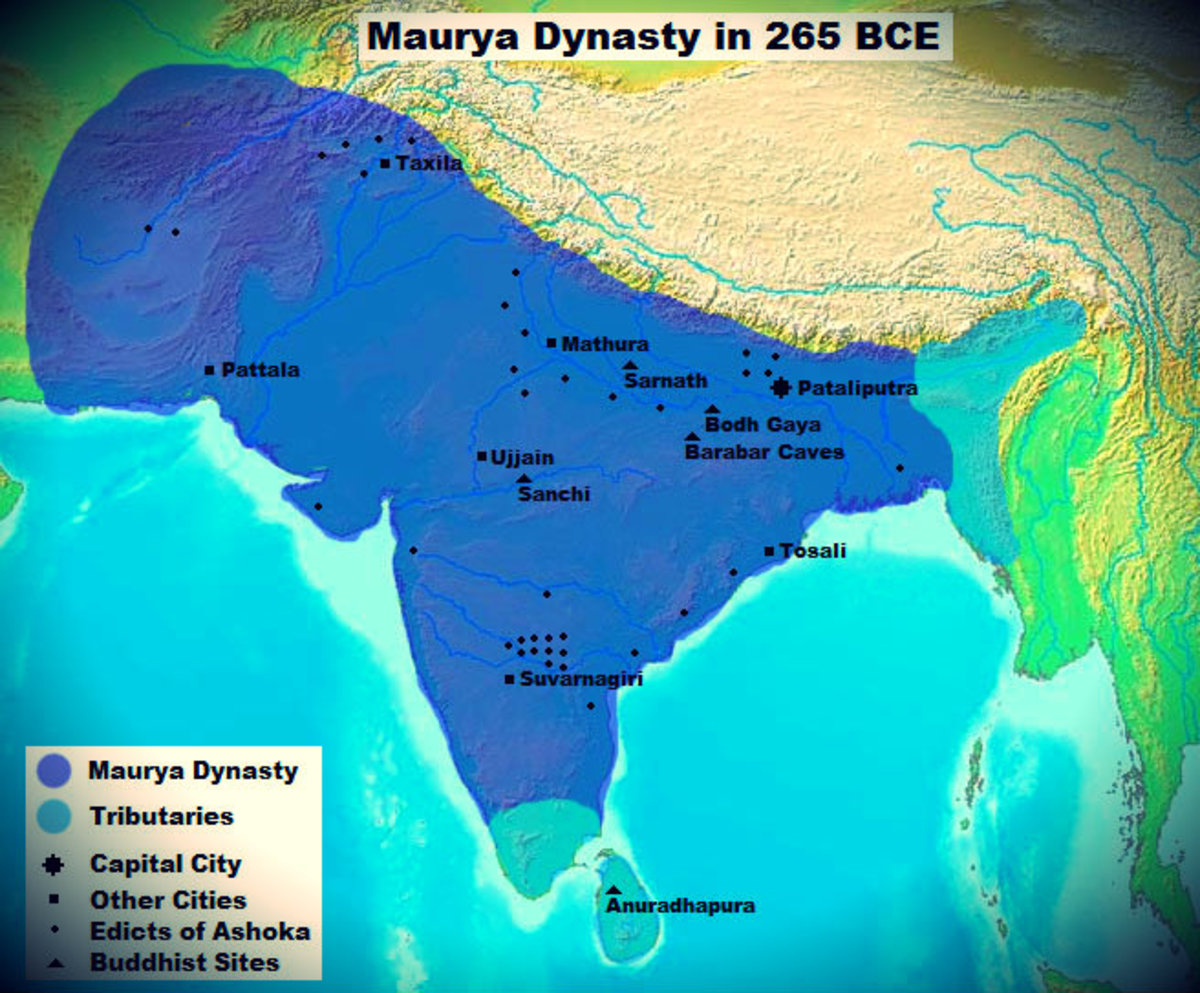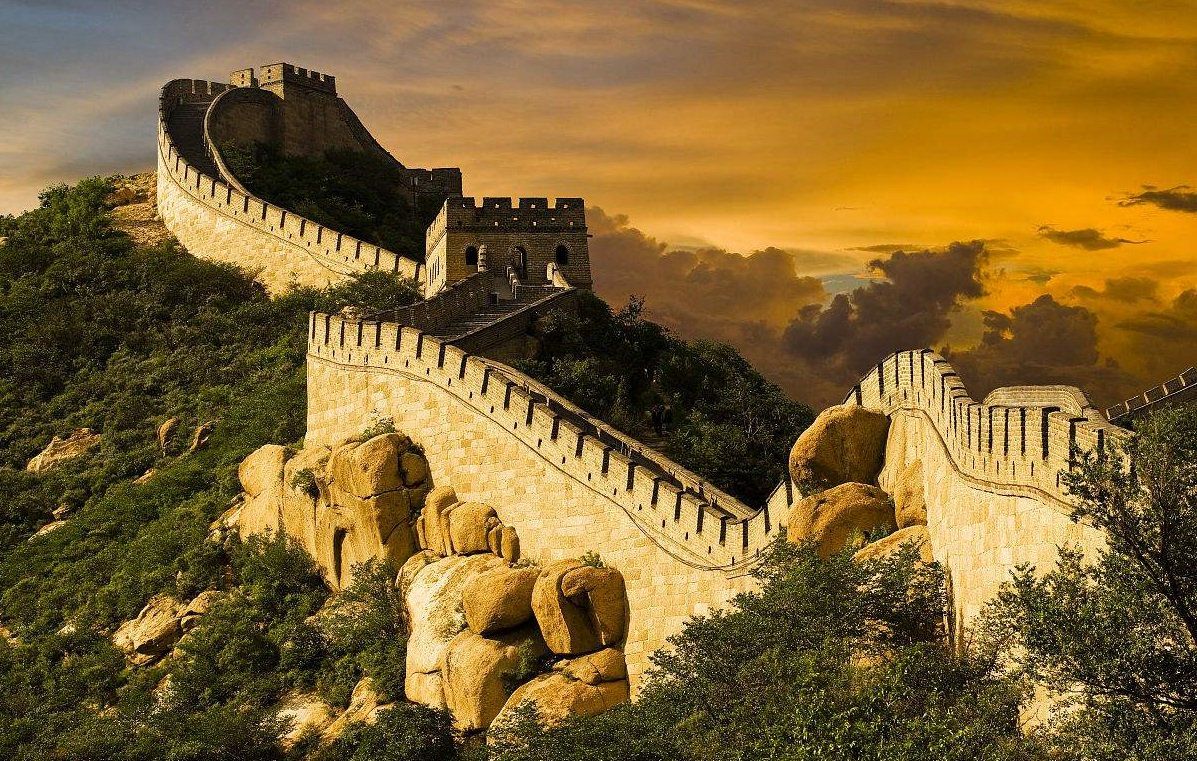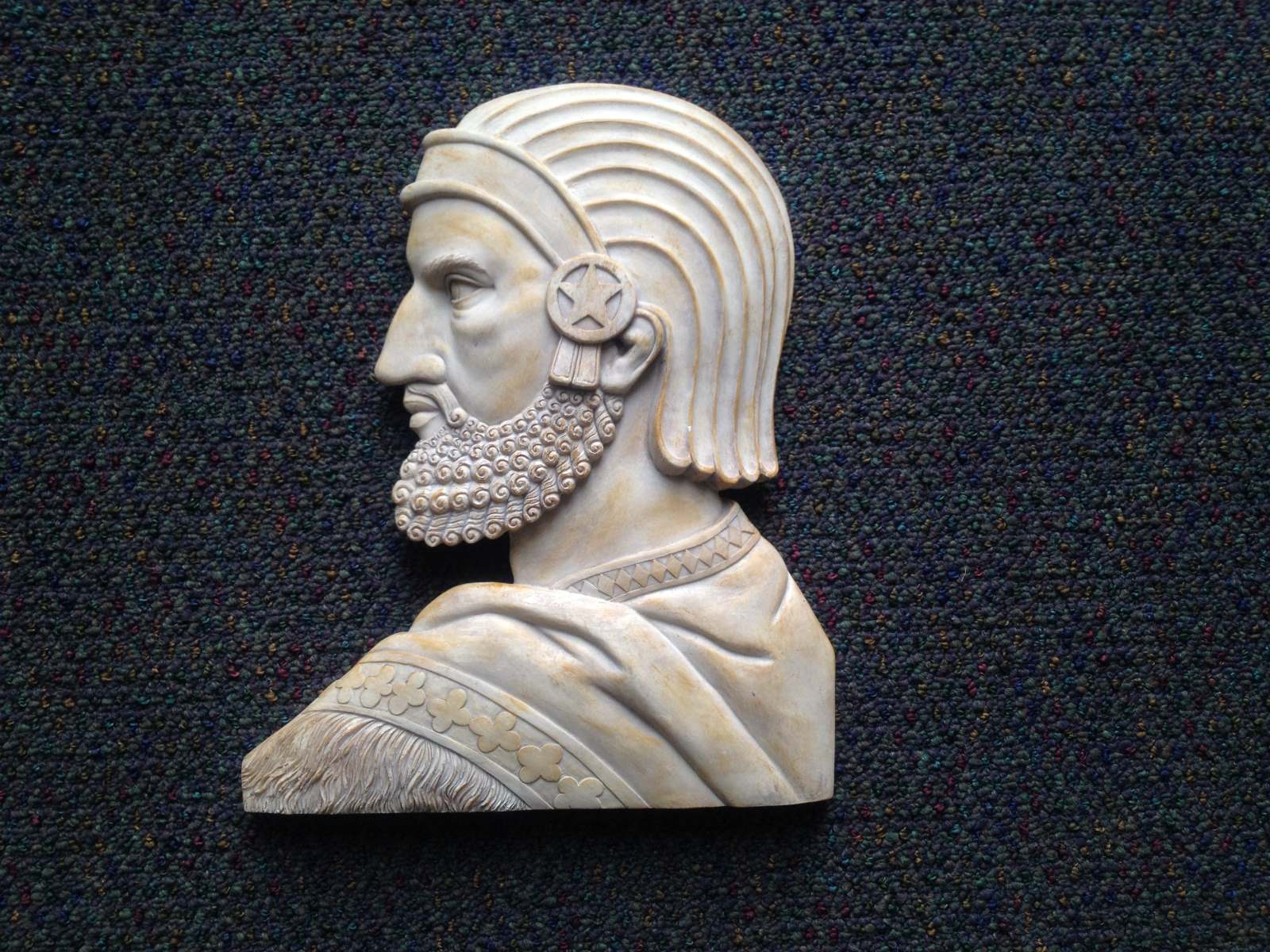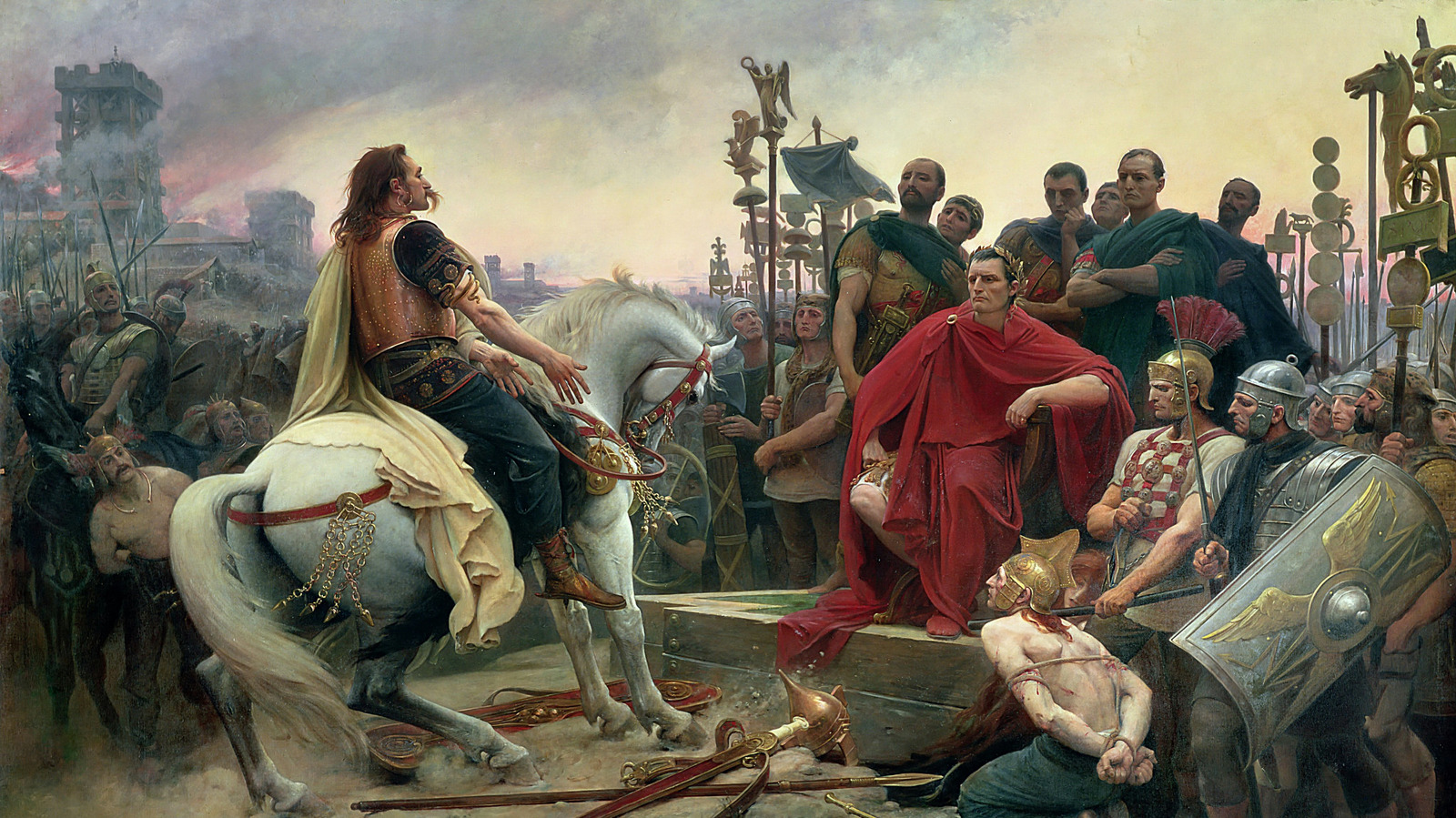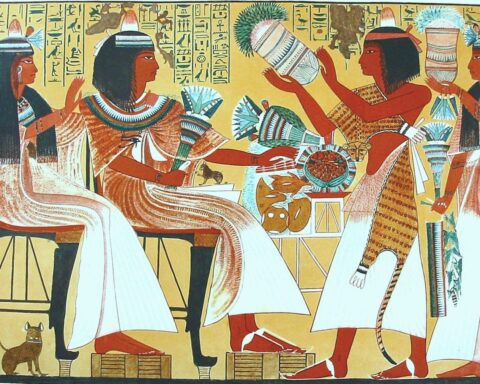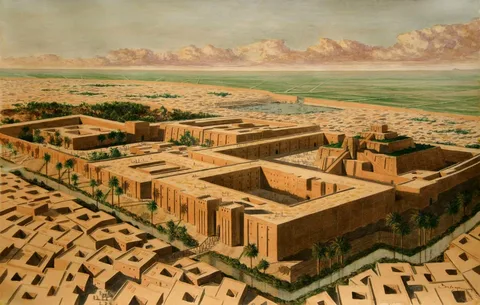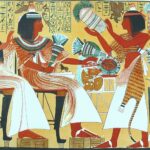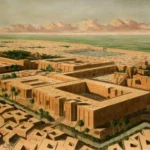The Rise to Power
Assyrian Empire (911 – 612 BCE)
The Assyrian Empire was one of the most influential and powerful empires in ancient history, spanning from 911 to 612 BCE. It emerged as a major power in the 10th century BC and went on to dominate Mesopotamia, also known as the Fertile Crescent, which includes modern-day Iraq, Syria, Lebanon, Jordan, Israel, and parts of Turkey and Egypt.
The Assyrian Empire was founded by Ashur (also known as Ashur-nasir-pal) II in 911 BC. During his reign, he expanded the empire’s territory through military campaigns against neighboring kingdoms and empires. He also implemented administrative reforms that established a system of government, which included a complex network of officials, governors, and administrators.
The Assyrian Empire reached its peak during the reign of Sennacherib (704-681 BCE), who is best known for his extensive building projects and military conquests. He built several palaces, temples, and irrigation systems throughout the empire, including the famous Hanging Gardens of Babylon, which was one of the Seven Wonders of the Ancient World.
However, Sennacherib’s reign also saw a series of devastating wars against Judah, Israel, and other neighboring kingdoms. The Assyrians used siege engines and advanced military tactics to conquer these territories, leading to widespread destruction and deportation of populations.
The empire continued under the rule of Esarhaddon (681-669 BCE), who expanded the empire’s territory through military campaigns in Egypt and Anatolia. He also implemented administrative reforms that established a new system of government, which included the creation of provinces and governors.
However, the Assyrian Empire began to decline after 612 BC, when it was invaded by a coalition of Babylonians, Medes, and Scythians. The empire was eventually destroyed, and its last capital, Nineveh, was captured and sacked. The fall of the Assyrian Empire marked the end of an era in ancient history, but its legacy continued to shape the course of Western civilization.
The Assyrian Empire left a lasting impact on the development of Western civilization. Its innovations in government, architecture, art, and literature influenced subsequent empires, including the Babylonian, Persian, Greek, and Roman Empires. The empire’s emphasis on the power of the state, its use of advanced military tactics, and its focus on trade and commerce helped to establish many of the institutions and practices that would shape Western civilization.
Furthermore, the Assyrian Empire’s cultural achievements had a profound impact on the development of art, literature, and architecture. Its palaces, temples, and monuments featured intricate carvings, sculptures, and reliefs that showcased its mastery of artistic techniques. The empire’s scribes produced numerous texts in various languages, including cuneiform, which revealed new knowledge about mathematics, astronomy, and medicine.
The study of the Assyrian Empire has also provided valuable insights into the history of Mesopotamia and the ancient Near East. Archaeological excavations at sites such as Nineveh, Khorsabad, and Nimrud have uncovered important artifacts that shed light on the empire’s daily life, its social hierarchy, and its military campaigns.
The legacy of the Assyrian Empire continues to inspire contemporary research in various fields, including history, archaeology, anthropology, and linguistics. Its influence can be seen in modern art, literature, and architecture, where many artists and designers draw inspiration from ancient Mesopotamian motifs and styles.
Founded by Adadnirari II, the Assyrian Empire expanded rapidly under successive rulers, absorbing neighboring territories and establishing a vast network of roads and trade routes.
The Assyrian Empire, founded by Adadnirari II, underwent a period of rapid expansion under successive rulers, resulting in the absorption of neighboring territories and the establishment of a vast network of roads and trade routes. This expansion was facilitated by the development of advanced military tactics and technologies, including the use of cavalry and siege engines.
Under the rule of Shalmaneser I, the Assyrian Empire expanded its borders to include the regions of Upper Mesopotamia, including the city-states of Arrapha and Nineveh. The empire’s expansion continued under the reign of Tukulti-Ninurta I, who conquered the region of Syria and incorporated it into the empire.
The 12th century BC saw the rise of Tiglath-Pileser III to power, who implemented a series of reforms aimed at centralizing authority within the empire. These reforms included the creation of a standardized system of government, as well as the establishment of a powerful and efficient administrative apparatus.
Tiglath-Pileser’s military campaigns expanded the Assyrian Empire’s borders even further, with conquests in Egypt, Babylon, and other regions of Mesopotamia. His successor, Shalmaneser III, continued this policy of expansion, conquering territories as far afield as Anatolia (modern-day Turkey).
The late 8th century BC saw the rise of Sargon II to power, who implemented a series of reforms aimed at solidifying the Assyrian Empire’s position in Mesopotamia. These reforms included the creation of new administrative districts and the establishment of a more centralized system of government.
Under the rule of Esarhaddon, the Assyrian Empire expanded its borders to include the regions of Phoenicia and Palestine, as well as parts of Egypt. Esarhaddon’s military campaigns were marked by their ferocity and efficiency, and he is remembered in history as one of the greatest Assyrian emperors.
The final years of the Assyrian Empire saw the rise of Ashurbanipal to power, who implemented a series of reforms aimed at consolidating the empire’s gains. These reforms included the creation of a vast library at Nineveh, which contained works on literature, history, and science from across the ancient world.
Despite its many achievements, however, the Assyrian Empire eventually fell to the Babylonians in 612 BC. The city of Nineveh was captured and sacked by the Babylonian king Nebuchadnezzar II, marking the end of an empire that had once stretched across a vast portion of the ancient world.
Egyptian Empire (1550 – 1085 BCE)
The Egyptian Empire is one of the most fascinating and enduring civilizations of ancient times, spanning over five millennia from around 3100 to 30 BCE. During this period, Egypt rose to become a powerful and sophisticated empire that left an indelible mark on world history.
However, for the purpose of this discussion, we will focus on the New Kingdom period of Ancient Egypt, which flourished from approximately 1550 to 1085 BCE. This era is often regarded as one of Egypt’s greatest periods, marked by a golden age of cultural and military achievements under the rule of powerful pharaohs.
During this time, the Egyptian Empire reached its zenith in terms of power, wealth, and territorial control. The pharaohs of this period were skilled warriors and statesmen who expanded Egypt’s borders through strategic military campaigns against neighboring nations, including the Nubians to the south and the Mitanni to the north.
One of the most notable achievements of the New Kingdom was the reign of Pharaoh Ramses II (1279-1213 BCE), also known as Ramses the Great. He was a mighty warrior who led many successful military campaigns, including battles against the Hittites and the Libyans, and his name became synonymous with power, strength, and wisdom.
The New Kingdom period saw significant advancements in art, literature, and architecture, as well as major breakthroughs in medicine, mathematics, and engineering. The Egyptian temples and tombs built during this era are some of the most impressive examples of ancient architecture, featuring intricate carvings, majestic columns, and grand hieroglyphic inscriptions.
The great library at Alexandria, founded during the Ptolemaic period (323-30 BCE), was a hub of learning and scholarship that attracted scholars from all over the Mediterranean world. Egyptian scribes and scholars made significant contributions to mathematics, astronomy, and medicine, often using mathematical calculations and astronomical observations to develop accurate calendars and predict celestial events.
The New Kingdom period also saw a shift in Egypt’s economic and social systems, with an increasing emphasis on international trade and commerce. Egypt became a major center of trade, exchanging goods such as gold, ebony, lapis lazuli, and papyrus for other valuable commodities like silver, copper, and olive oil.
Despite its impressive achievements, the New Kingdom period eventually came to an end due to internal conflicts, external pressures, and environmental factors. The 18th Dynasty, which included famous pharaohs such as Thutmose III and Hatshepsut, was followed by a series of weak and ineffective rulers who allowed Egypt’s power and influence to wane.
However, the legacy of Ancient Egypt continued to inspire and influence subsequent civilizations, including the Greeks and Romans. The study of Egyptian history, culture, and achievements has become an essential part of human understanding and appreciation for the richness and diversity of human experience.
With its strong pharaonic tradition, ancient Egypt’s military prowess and diplomatic skills allowed it to conquer Nubia, Syria, and Palestine, making it a dominant force in the Near East.
The ancient Egyptian civilization was renowned for its impressive military prowess, diplomatic skills, and strong pharaonic tradition, which enabled it to extend its dominance over various regions in the Near East. This powerful empire’s influence can be observed in its conquest of Nubia, Syria, and Palestine.
One of the primary factors that contributed to Egypt’s military success was its well-organized army, which consisted of skilled soldiers equipped with advanced technology for their time. The Egyptian army employed tactics such as ambushes, siege warfare, and naval battles to conquer their territories. Additionally, they utilized sophisticated fortifications and defensive structures to protect their borders.
The diplomatic skills of the ancient Egyptians played a crucial role in maintaining peace with neighboring nations and expanding their empire through strategic alliances. They engaged in trade relationships with other civilizations, exchanging goods such as grain, oil, and precious stones. This diplomacy helped to secure Egypt’s position as a dominant power in the region.
Under the leadership of powerful pharaohs, ancient Egypt’s military campaigns expanded its territories to include Nubia to the south, which was an important source of gold and other resources. The Egyptian conquest of Syria and Palestine allowed them to control key trade routes and secure access to vital resources such as oil and grain.
The Egyptian dominance in the Near East had a profound impact on the region’s culture, politics, and economy. The Pharaonic tradition influenced the development of art, architecture, and literature in neighboring civilizations. Egypt’s military might and diplomatic prowess made it an attractive ally for other nations, and its influence extended far beyond its borders.
Some notable ancient Egyptian empires that contributed to the expansion of their territories include
- The New Kingdom (1550-1070 BCE), which saw significant military conquests in Nubia, Syria, and Palestine under pharaohs such as Thutmose III and Ramses II.
- The Third Intermediate Period (1070-664 BCE), during which Egypt was weakened by internal conflicts but still maintained its influence over neighboring regions.
- The Ptolemaic Kingdom (323-30 BCE), which marked the end of Egyptian independence as it fell under Greek rule following Alexander’s conquests.
Administrative Systems
Achaemenid Empire (550 – 330 BCE)
The Achaemenid Empire was one of the largest empires in ancient history, spanning from modern-day Iran to parts of Egypt, Anatolia, Greece, Babylon, and Persepolis. It was founded by Cyrus the Great in 550 BCE and lasted until its conquest by Alexander the Great in 330 BCE.
The Achaemenid Empire was a vast and diverse state that encompassed various cultures, languages, and ethnic groups. Its territories extended from the Indus River in the east to the Mediterranean Sea in the west, making it one of the largest empires in the world at that time.
Cyrus the Great, the founder of the empire, was a wise and just ruler who expanded the Persian Empire through conquests and strategic alliances. He allowed conquered peoples to maintain their local customs and traditions, which helped to create a harmonious and prosperous empire.
One of the key features of the Achaemenid Empire was its impressive system of government, which included a network of satraps (governors) and a complex administrative system. The satraps were responsible for collecting taxes, maintaining law and order, and overseeing local affairs.
The empire’s economy thrived due to its extensive trade networks, which connected the East and West through the Royal Road, a 2,500-mile highway that stretched from Susa in modern-day Iran to Sardis in modern-day Turkey. The Achaemenids also developed a system of weights and measures, as well as a standardized currency.
The empire’s most famous monument is Persepolis, the ceremonial capital built by Darius I around 520 BCE. Persepolis was designed to showcase the grandeur and power of the Persian Empire, featuring intricate carvings, imposing columns, and ornate decorations.
Despite its many achievements, the Achaemenid Empire faced several challenges, including internal conflicts, external threats from neighboring states, and economic troubles. In 330 BCE, Alexander the Great conquered Persepolis and the empire eventually came to an end, marking the beginning of a new era in world history.
However, the legacy of the Achaemenid Empire continues to be felt today. The empire’s administrative system, laws, and architecture have had a lasting impact on subsequent civilizations, from the Hellenistic kingdoms to modern-day Iran and Turkey.
In conclusion, the Achaemenid Empire was a remarkable ancient civilization that left an indelible mark on world history. Its achievements in government, economy, architecture, and culture have inspired countless people throughout the ages, making it one of the greatest empires of all time.
Developing an efficient system of governance, the Achaemenids created satrapies (administrative divisions), standardized weights and measures, and established a vast postal network to facilitate communication.
The development of an efficient system of governance is crucial for any empire, as it allows for effective management of resources, administration of territories, and coordination of activities across vast distances. The Achaemenid Empire, which existed from the 6th to the 4th century BCE, is a prime example of a civilization that implemented innovative systems and technologies to enhance governance.
One of the key features of Achaemenid governance was the creation of satrapies, or administrative divisions. These provinces were governed by satraps, who were appointed by the king and responsible for collecting taxes, maintaining order, and overseeing the administration of their region. The division of the empire into manageable territories facilitated efficient management and allowed for more direct control over local affairs.
Another significant aspect of Achaemenid governance was the standardization of weights and measures. By establishing a uniform system of measurement across the empire, trade, commerce, and communication became much easier. This standardized system also helped to promote economic growth by facilitating the exchange of goods and services between different regions. The use of standardized weights and measures also facilitated administrative tasks, such as taxation, accounting, and record-keeping.
The Achaemenids also recognized the importance of communication in maintaining an efficient system of governance. To address this need, they established a vast postal network, known as the royal road or chânpâram, which connected different parts of the empire. This network allowed for rapid exchange of messages and information between the king and his satraps, facilitating decision-making, coordination, and administration across long distances.
The Achaemenid system of governance also involved a well-organized administrative hierarchy. At the top of this hierarchy was the king, who served as the supreme authority and commander-in-chief of the empire’s armed forces. Below the king were the satraps, who governed the provinces and reported directly to the king. The administration also included various officials, such as governors, treasurers, and scribes, who oversaw specific aspects of governance, such as taxation, finance, and record-keeping.
In conclusion, the Achaemenids developed an efficient system of governance that facilitated effective management of their vast empire. Their creation of satrapies, standardization of weights and measures, establishment of a postal network, and well-organized administrative hierarchy all contributed to the success of their governance system, allowing them to maintain control over their territories for several centuries.
Roman Empire (27 BCE – 476 CE)
The Roman Empire was one of the most powerful and influential empires in ancient history, lasting from 27 BCE to 476 CE. It was founded by Augustus Caesar, who became the first emperor of Rome after the death of his great-uncle Julius Caesar.
During its peak, the Roman Empire spanned across three continents: Europe, North Africa, and parts of Asia. Its territories included modern-day Italy, France, Spain, Portugal, Belgium, Netherlands, Switzerland, Austria, Hungary, Romania, Bulgaria, Greece, Turkey, Egypt, Israel, Palestine, Jordan, Lebanon, Syria, and parts of Germany.
The Roman Empire was known for its impressive infrastructure, including roads, bridges, aqueducts, and public buildings. The Romans built over 250,000 miles of roads, many of which still exist today, and their architecture influenced the design of buildings for centuries to come.
Roman engineering also developed advanced technologies such as concrete, which was used to build structures like the Pantheon and the Colosseum. The Colosseum, in particular, is an iconic symbol of Roman power and ingenuity, hosting gladiatorial contests and public events that could accommodate up to 50,000 spectators.
The Roman economy was based on a system of slave labor, which allowed for the exploitation of cheap labor to fuel economic growth. However, this system also led to social unrest and rebellions among the plebeian class, who resented their lack of freedom and equality.
Despite its many achievements, the Roman Empire declined due to internal corruption, external pressures from barbarian tribes, and a series of civil wars that weakened its leadership. The empire was eventually divided into Eastern (Byzantine) and Western halves, with the Western half succumbing to the Germanic king Odoacer in 476 CE.
The legacy of the Roman Empire can still be seen in modern-day architecture, language, law, and governance. Its influence on Western civilization is immeasurable, shaping the course of history for centuries to come.
Innovating their administrative system, the Romans implemented a division into provinces, each governed by a senator or equestrian appointed by the Emperor.
The Roman Empire is renowned for its innovative approach to governance, and one significant aspect of this was the implementation of a provincial administrative system. This division allowed for more efficient management and organization of the vast territories under their control.
Under the Roman system, each province was governed by either a senator or an equestrian who had been appointed by the Emperor. This system provided a clear line of authority and ensured that power was distributed across various regions, thereby preventing any single individual from accumulating too much influence.
The division into provinces facilitated effective communication and coordination between different administrative centers. Provincial governors would maintain regular contact with their superiors in Rome, as well as with neighboring provinces, to share information and address common concerns.
Furthermore, the provincial system allowed for greater adaptability and responsiveness to local needs. Governors were free to implement policies tailored to specific regional circumstances, rather than relying on one-size-fits-all solutions from a central authority.
This innovative approach had numerous benefits, including enhanced security, increased economic growth, and improved infrastructure development. By dividing their vast territories into manageable provinces, the Romans could effectively maintain control over their empire while also promoting stability and prosperity.
Notable Leaders
Akhenaten of Egypt (1353 – 1336 BCE)
Akhenaten, also known as Amenhotep IV, was an Egyptian pharaoh who ruled from approximately 1353 to 1336 BCE. He is considered one of the most enigmatic and intriguing figures in ancient Egyptian history, known for his radical and innovative policies that transformed the culture and society of Egypt.
Akhenaten’s Early Life: Akhenaten was born into a wealthy and influential family, possibly related to the royal family. His father was Amenhotep III, who was one of the most successful and powerful pharaohs in Egyptian history. After becoming pharaoh, Akhenaten embarked on a series of reforms that would change the course of Egyptian history.
The Move to Amarna: One of the most significant events of Akhenaten’s reign was the establishment of his new capital city, Amarna, which he built specifically for himself and his family. This new city was designed as a symbolic center of power and worship, with grand temples, palaces, and art galleries that showcased the beauty and elegance of Egyptian culture.
A New Solar-Based Pantheon: Akhenaten introduced a radical new pantheon of gods, centered around the sun god Aten, which he worshipped as his sole deity. This move marked a significant departure from the traditional polytheistic practices of Egypt, where multiple gods and goddesses were worshipped for different aspects of life.
Radical Social and Artistic Reforms: Akhenaten’s reign was also characterized by radical social and artistic reforms, which sought to break free from traditional Egyptian norms. His art style, often referred to as the Amarna Period, featured more naturalistic depictions of people and animals, which reflected his emphasis on individuality and humanism.
Akhenaten’s Legacy: The legacy of Akhenaten remains a topic of debate among historians and scholars. Some see him as a visionary leader who broke free from the traditional constraints of Egyptian society, while others view him as a tyrannical ruler who imposed his own personal whims on his subjects.
Despite these debates, one thing is clear: Akhenaten’s impact on Egyptian history was profound. His innovative policies and artistic style paved the way for future dynasties to build upon his achievements, shaping the course of Egypt’s development in lasting ways.
Akhenaten’s story remains a testament to the power of individual vision and creative expression, reminding us that even in ancient times, human beings had the capacity to dream big, challenge the status quo, and leave their mark on history.
A radical reformer, Akhenaten introduced monotheistic worship and centralized power in Egypt’s government.
Akhenaten, a radical reformer who reigned during ancient Egypt’s 18th dynasty, introduced monotheistic worship, replacing the traditional Egyptian pantheon of gods with a single deity, Aten. This revolutionary idea had far-reaching consequences for Egyptian society and politics.
The shift to monotheism was part of a broader effort to centralize power in the hands of the pharaoh. Akhenaten moved the capital from Thebes to Amarna, a new city built specifically to showcase his vision of a unified, worship-based empire. This deliberate choice aimed to consolidate power and control over the population.
Thecentralization of power also led to significant reforms in Egypt’s governance and economic systems. Akhenaten replaced the traditional bureaucracy with a more streamlined administration, reducing the influence of local nobles and priests who had long wielded considerable power in Egyptian society.
Akhenaten’s radical approach to religion, government, and economy was met with resistance from various quarters, including members of his own family. The pharaoh’s marriage to Nefertiti, a woman of humble origins, was seen as an affront to traditional social norms.
The shift in focus towards Aten, the single deity worshipped by Akhenaten and his followers, led to significant changes in Egyptian art and architecture. The pharaoh’s new capital, Amarna, boasted numerous temples dedicated to Aten, characterized by an emphasis on sunlight and a departure from traditional Egyptian iconography.
Despite these innovations, Akhenaten’s reign was marked by controversy and conflict. His efforts to promote his new deity led to opposition from the priestly class, who saw his actions as a threat to their power and influence. This tension ultimately contributed to Akhenaten’s downfall.
The impact of Akhenaten’s radical reforms can still be felt today. The introduction of monotheistic worship and centralized power laid the groundwork for subsequent empires in the ancient Near East, shaping the course of history in lasting ways.
Pericles of Athens (495 – 429 BCE)
Pericles of Athens was a prominent Greek statesman, politician, and general who played a key role in shaping the city-state ofAthens
during its golden age. Born around 495 BCE, he came from an aristocratic family that claimed descent from Ionic Greeks. Pericles’ family background was influential in shaping his life and career.
Periclean Athens, which existed from the mid-5th century to the early 4th century BCE, is considered one of the most important periods in Athenian history. During this time, the city experienced significant growth and prosperity under the leadership of Pericles. He implemented various reforms and policies that transformed Athens into a major cultural and economic center.
Pericles was elected as theStrategos, or general, of Athens in 460 BCE, a position he held until his death in 429 BCE. As Strategos, he played a key role in Athenian politics, foreign policy, and military campaigns. He implemented several reforms aimed at strengthening democracy and promoting Athenian culture.
Pericles’ policies had far-reaching implications for the development of Athens. He initiated major public works projects, including:
- The Parthenon, a majestic temple dedicated to Athena Parthenos, which became one of the most iconic landmarks in Greece.
- Tholos, a circular building that served as an Athenian treasury and civic center.
- Pnyx, a hill where the Ekklesia, or Athenian assembly, met to discuss politics and governance.
- Agora, the central marketplace of Athens, which played a crucial role in economic and social life.
- The Kerameikos, an ancient cemetery where prominent citizens were buried.
Pericles’ vision for Athens was not only to create a thriving city but also to spread democracy and Hellenism across the Mediterranean. He encouraged trade, cultural exchange, and intellectual pursuits, fostering a rich cultural and artistic landscape.
Pericles’ leadership during thePeloponnesian War, however, would eventually lead to his downfall. Athens’ defeat in the war led to his exile, and he died shortly thereafter in 429 BCE at the age of 75 or 7Despite this, his legacy continued to shape Athenian politics, culture, and society for centuries to come.
Leading Athens during its Golden Age, Pericles implemented democratic reforms, supported the arts and culture, and oversaw the construction of iconic landmarks.
During the Golden Age of Athens, around 450-430 BCE, Pericles played a pivotal role as the city-state’s leader, overseeing its transformation into a model of democracy and cultural excellence. His vision for Athens was centered on creating a thriving urban center that would rival the great powers of ancient Greece.
Pericles implemented various democratic reforms to consolidate power in the hands of the people. He introduced the concept of ostracism, allowing citizens to vote on whether to exile individuals deemed a threat to the state’s safety. This measure served as a means of resolving conflicts between rival leaders and ensured that no single individual could dominate the Athenian government.
In his efforts to promote artistic and cultural development in Athens, Pericles supported public performances of Greek tragedy and comedy. Under his patronage, renowned writers such as Sophocles, Euripides, and Aristophanes gained recognition for their masterpieces. Furthermore, Pericles encouraged the construction of magnificent temples, theaters, and other monumental buildings that would serve as testaments to Athenian ingenuity.
The most iconic landmarks associated with Pericles’ reign are undoubtedly the Acropolis, a citadel situated atop a hill in the heart of Athens, and the Parthenon, an imposing temple dedicated to the goddess Athena. The construction of these structures showcased Pericles’ ability to balance artistic expression with pragmatic needs. Both projects required the input of skilled architects, artists, and engineers from across ancient Greece.
The culmination of Pericles’ efforts was his sponsorship of the Great Building Program, which aimed to transform Athens into a grand city-state worthy of its rich cultural heritage. Under this initiative, many of the city’s most celebrated buildings were constructed or renovated, including temples, theaters, and civic monuments.
Despite Pericles’ significant contributions, he faced numerous challenges during his tenure as leader of Athens. His vision for democracy was not universally accepted by his contemporaries, and opposition from rival leaders posed a constant threat to his rule. However, through his unwavering commitment to the welfare of the Athenian people and the promotion of their cultural interests, Pericles secured a lasting legacy that has captivated historians and scholars for centuries.
Pericles’ tenure as leader of Athens during its Golden Age stands as a testament to his vision, leadership skills, and enduring impact on Western culture. His efforts to promote democracy, artistic expression, and civic development have inspired countless generations and continue to shape the world we live in today.
Economic Achievements
Mycenaean Greece (1600 – 1100 BCE)
The Mycenaean civilization, which flourished from approximately 1600 to 1100 BCE, was one of the most influential and iconic ancient civilizations in Greece. This Bronze Age culture emerged in the southern part of the Greek mainland, centered around cities such as Mycenae, Tiryns, and Pylos.
The Mycenaean period is often considered a “golden age” for Greece, marked by significant advances in art, architecture, literature, and politics. The Mycenaeans are also credited with developing the Greek alphabet, which would eventually evolve into the modern Greek script used today.
One of the most notable aspects of Mycenaean society was its system of governance, which was based on a complex network of kings, nobles, and priestesses. The city-state of Mycenae, in particular, is famous for its Cyclopean walls, massive fortifications built using large stone blocks, weighing as much as 120 tons.
The economy of the Mycenaean civilization was heavily reliant on trade, with extensive networks established across the Mediterranean region. Goods such as olive oil, wine, and textiles were traded for precious metals like gold and silver, which were used to adorn palaces and temples.
Archaeological excavations have revealed a rich cultural heritage of Mycenaean Greece, including stunning examples of pottery, jewelry, and other artifacts. The famous “Lion Gate” at Mycenae, for example, is adorned with intricate carvings and statues of lions and mythological creatures.
The mythology and legends of the Mycenaeans have also had a profound impact on Western culture. The stories of heroes like Perseus, Theseus, and Heracles have been retold and reinterpreted throughout history, influencing art, literature, and even modern-day pop culture.
Despite its cultural achievements and significant legacy, the Mycenaean civilization declined around 1100 BCE, likely due to a combination of internal strife and external pressures. The collapse of this ancient empire marked the end of an era for Greece, but paved the way for the rise of classical Greek civilization in the centuries that followed.
Here are some key figures associated with Mycenaean Greece
- Pylus (Pylos)
- Tiryns
- Mycenae
- Agamemnon
- Clytemnestra
- Orestes
- Iphigenia
The Mycenaean civilization has had a lasting impact on the world of art and architecture, with its stunning palaces, temples, and tombs continuing to inspire architects and artists today. Its rich mythology and cultural heritage have also influenced literature, film, and other forms of media, making it one of the most enduring legacies of ancient Greece.
Developing a thriving economy based on trade, the Mycenaeans established a robust maritime trade network with Egypt and the Near East.
The Mycenaean civilization was known for its significant contributions to the development of a thriving economy based on trade, with a robust maritime trade network extending from Egypt and the Near East. This impressive trading system played a crucial role in shaping their economic prosperity and influencing the course of history in the region.
One key aspect of Mycenaean trade was its extensive networks with neighboring regions. The Mycenaeans traded goods such as olive oil, wine, textiles, and metalwork for commodities like grains, metals, and other valuable resources. This exchange fostered economic cooperation, cultural exchange, and the establishment of strong diplomatic relationships with their trading partners.
The Mycenaean economy was also characterized by a highly developed system of weights and measures, which facilitated trade and commerce across vast distances. The use of standardized weights and measures ensured that goods were accurately valued and exchanged without dispute, contributing to the growth of international trade.
Another significant aspect of Mycenaean economic development was their mastery of metallurgy and metalworking techniques. The Mycenaeans had access to extensive gold, silver, copper, and bronze deposits, which they used to craft elaborate jewelry, armor, and other luxury items in high demand by their trading partners.
The Mycenaeans also made significant advancements in agriculture, with the introduction of new crops like wheat and barley, as well as improved farming techniques. This led to increased food production and a more stable economy, allowing for greater investment in trade, commerce, and other areas of economic activity.
In terms of the overall impact on the development of ancient civilizations, the Mycenaean trading network played a significant role in shaping the cultural, economic, and social landscape of the region. The exchange of goods, ideas, and technologies facilitated by this network contributed to the growth and prosperity of neighboring states and empires.
The seven greatest ancient empires that emerged from the Mycenaean trade network include:
- Ancient Egypt: With its extensive gold reserves and sophisticated agricultural systems, Egypt became a major trading partner with the Mycenaeans.
- The Mitanni Empire ( Syria-Levant ): Known for its skilled metallurgists and traders, the Mitanni Empire played a significant role in facilitating trade between the Mycenaeans and other regions.
- The Hittite Empire ( Central Anatolia ): As a major center of metal production and craftsmanship, the Hittites were key partners in the Mycenaean trading network.
- The Assyrian Empire ( Mesopotamia ): With its extensive trade networks and expertise in metallurgy and agriculture, the Assyrians became significant players in the Mycenaean economy.
- The Babylonian Empire ( Mesopotamia ): Known for their advanced irrigation systems and agricultural techniques, the Babylonians contributed to the growth of international trade with the Mycenaeans.
- The Phoenician City-States ( Eastern Mediterranean ): As a major center of maritime trade and commerce, the Phoenicians played a crucial role in facilitating exchange between the Mycenaeans and other regions.
- The Minoan Civilization ( Crete ): With its advanced palace economies and sophisticated trade networks, the Minoans contributed to the growth of international trade with the Mycenaeans.
The impact of these ancient empires on modern society extends beyond their individual legacies as significant players in world history. They demonstrate the power of global exchange and cooperation, highlighting the enduring value of robust economic systems based on mutual benefit, cultural exchange, and shared prosperity.
Mauryan Empire (322 – 185 BCE)
The Mauryan Empire was one of the largest and most powerful empires in ancient Indian history, spanning from 322 to 185 BCE. It was founded by Chandragupta Maurya, a young Indian leader who overthrew the ruling Nanda dynasty with the help of his mentor, Chanakya.
The empire expanded rapidly under the rule of Chandragupta and his son, Bindusara, conquering present-day Pakistan, Bangladesh, and parts of Afghanistan. The Mauryans developed a centralized administration system with governors appointed in each province to maintain law and order and collect taxes from local populations.
One of the most significant contributions of the Mauryan Empire was its development of art, architecture, and literature. The rock-cut caves at Ajanta and Ellora in Maharashtra are some of the finest examples of ancient Indian cave art. The emperor Ashoka also commissioned several monuments, including the Sanchi Stupa and the Lion Capital, which symbolize the Buddhist faith.
Under Ashoka’s rule, Buddhism spread throughout India, Nepal, Sri Lanka, and parts of Southeast Asia. He implemented policies of non-violence (dharma) and tolerance towards other faiths, earning him the title ‘The Great’ in ancient Indian history texts.
The Mauryan economy was primarily based on agriculture, with peasants cultivating crops such as rice, wheat, and barley. The empire also controlled a large network of trade routes, including the Silk Road, which connected India to Central Asia and China.
The decline of the Mauryan Empire is attributed to internal conflicts, external invasions, and regionalism. After Ashoka’s death in 232 BCE, his descendants continued to rule but were unable to maintain the empire’s unity and stability.
Some notable rulers under the Mauryan Empire include:
- Chandragupta Maurya: Founder of the empire, known for his military conquests and administrative reforms.
- Bindusara: Second emperor of the Mauryan dynasty, expanded the empire through strategic marriages and alliances.
- Ashoka: Fourth ruler of the Mauryans, transformed the empire into a Buddhist state, implementing policies of dharma and tolerance.
The legacy of the Mauryan Empire can be seen in its enduring influence on Indian culture, politics, and art. It has inspired numerous monarchs and emperors throughout history to follow in their footsteps, including the Gupta and Mughal dynasties.
Under Ashoka’s rule, Mauryan India saw significant economic growth, with extensive networks of roads, commerce, and international relations.
During Ashoka’s reign, which spanned from approximately 268 to 232 BCE, Mauryan India experienced a period of substantial economic growth and development. This growth was fueled by the construction of an extensive network of roads that facilitated communication, trade, and commerce across the subcontinent.
The roads built during this period were not only important for facilitating the movement of goods and people but also played a crucial role in spreading Buddhism beyond India’s borders. Ashoka himself embarked on numerous diplomatic missions to neighboring kingdoms, establishing friendly relationships with them through diplomacy and trade.
Mauryan India’s economy flourished as a result of its strategic location at the crossroads of major trade routes between ancient civilizations. Merchants from all over the world traded extensively in goods such as silk, spices, precious stones, and metals. This exchange not only enriched Indian merchants but also facilitated cultural exchange between different nations.
The Mauryan Empire’s extensive network of international relations was another significant aspect of its economic growth. Ashoka maintained diplomatic relationships with neighboring kingdoms through the use of envoys, ambassadors, and other forms of diplomatic communication. He even sent Buddhist monks to spread Buddhism in these regions, further solidifying the empire’s influence.
The growth of commerce during this period also led to significant advancements in various industries such as textiles, metalworking, and architecture. Indian artisans developed unique techniques for producing intricate carvings, ornate jewelry, and other luxury goods that were highly prized across ancient civilizations.
Additionally, the Mauryan Empire’s extensive network of roads facilitated the spread of ideas, innovations, and technologies from one region to another. This exchange contributed to significant advancements in various fields such as science, technology, engineering, and mathematics (STEM).
The Mauryan Empire’s economic growth during Ashoka’s rule was thus a critical period that laid the foundation for India’s future prosperity and influenced the course of world history.
Cultural Contributions
Ancient Chinese Civilization (1600 BCE – 221 BCE)
The Ancient Chinese civilization is one of the most fascinating and influential civilizations in world history, spanning over a period of more than 1,500 years (1600 BCE – 221 BCE).
This vast and complex empire was marked by numerous dynasties, including the Shang, Zhou, Qin, Han, Tang, Song, Ming, and Qing dynasties, each contributing to the growth and development of Chinese civilization.
One of the most significant achievements of Ancient China was the invention of writing, which dates back to around 1200 BCE during the Shang Dynasty. The Oracle Bones, a collection of turtle shells and animal bones with inscriptions, are considered some of the earliest examples of written records in Chinese history.
The Zhou Dynasty (1046 – 256 BCE) saw significant advancements in politics, economy, and culture. This period is often referred to as the “Golden Age” of Ancient China due to its emphasis on Confucianism, Taoism, and Buddhism, which had a profound impact on Chinese thought and behavior.
The Qin Dynasty (221 – 206 BCE) marked the beginning of Imperial China, with the first emperor, Qin Shi Huang, unifying various warring states under one rule. This period saw significant infrastructure projects such as the construction of the Great Wall of China, the Terracotta Army, and the Standardization of weights and measures.
The Han Dynasty (206 BCE – 220 CE) is often regarded as one of the greatest periods in Chinese history. During this time, Buddhism spread rapidly throughout the empire, while Confucianism became an integral part of government and education. The Silk Road, a network of trade routes connecting China with Central Asia and Europe, flourished during the Han period.
The Tang Dynasty (618 – 907 CE) is often referred to as the “Golden Age” of Chinese poetry, art, and culture. This period saw significant advancements in literature, music, and architecture, while Buddhism continued to spread throughout the empire.
The Song Dynasty (960 – 1279 CE) marked a new era of scientific and economic growth, with the invention of gunpowder, paper money, and the compass. The period also saw significant advancements in education, art, and literature.
The Ming Dynasty (1368 – 1644 CE) is known for its impressive architectural achievements, including the Forbidden City, the Temple of Heaven, and the Great Wall’s extension. This period also saw significant developments in shipbuilding, porcelain production, and silk manufacture.
Contributing to the development of Confucianism, Daoism, and other philosophical traditions, ancient China laid the foundations for East Asian thought and culture.
The development of Confucianism, Daoism, and other philosophical traditions in ancient China laid the foundations for East Asian thought and culture. This period, which spanned from 6th century BCE to the Han dynasty (206 BCE – 220 CE), was marked by significant contributions to philosophy, ethics, politics, and spirituality. Confucius, a Chinese philosopher, is widely regarded as one of the most influential thinkers in East Asian history. His teachings, as recorded in the Analects, emphasized personal and governmental morality, correctness of social relationships, justice, and sincerity.
Confucianism ‘s impact on East Asian thought was profound, shaping the region’s culture, politics, and education for centuries to come. The Five Classics and Four Books were considered essential texts in Confucian studies, which focused on moral values, social norms, and governance. This philosophical tradition also emphasized self-cultivation, as individuals sought to become better people through education and personal reflection.
In contrast, Daoism, led by the legendary figure Lao Tzu, focused on living in harmony with nature and embracing the principles of spontaneity and non-action. Daoist thought often emphasized the cyclical nature of life and the interconnectedness of all things. This school of thought encouraged individuals to adopt a more holistic approach to existence, cultivating an awareness of their place within the natural world.
Another significant philosophical tradition in ancient China wasTaoism’s cousin, Buddhism, which entered China from India via the Silk Road. Buddhism introduced new concepts such as karma, rebirth, and enlightenment, influencing Chinese thought on morality, ethics, and spirituality. This synthesis of Buddhist and Taoist ideas led to the development of a unique East Asian worldview.
In addition to these major philosophical traditions, other influential schools of thought emerged in ancient China. For example,Maoism
(not to be confused with the 20th-century Chinese leader), a pre-Qin school, emphasized the importance of spontaneity and flexibility in human affairs. Meanwhile, National Alchemy, an esoteric tradition, focused on spiritual alchemy and the pursuit of immortality.
The rich cultural tapestry created by these philosophical traditions laid the groundwork for East Asian civilization’s remarkable achievements. By fostering a deep understanding of morality, ethics, and spirituality, ancient Chinese thinkers provided a foundation for subsequent dynasties to build upon. This enduring legacy has shaped East Asia into a vibrant region characterized by cultural diversity, historical depth, and ongoing philosophical inquiry.
Maya Civilization (2000 BCE – 1500 CE)
The Maya Civilization, one of the most advanced ancient civilizations in Mesoamerica, flourished from approximately 2000 BCE to 1500 CE. This civilization is renowned for its sophisticated knowledge of astronomy, mathematics, architecture, and art. The Maya civilization developed in several city-states, including Tikal, Palenque, Calakmul, and Caracol.
The heartland of the Maya Civilization was located in modern-day Mexico, Guatemala, Belize, Honduras, and El Salvador. The region’s fertile soil, abundant rainfall, and access to trade routes made it an ideal location for the development of a complex civilization.
One of the most impressive achievements of the Maya Civilization was their system of writing, which consisted of hieroglyphics and phonetic symbols. This writing system allowed them to record their history, mythology, and scientific knowledge in intricate detail.
The Maya were skilled astronomers who developed a sophisticated understanding of the solar year, lunar cycles, and planetary movements. They built elaborate astronomical observatories, such as the Temple IV at Tikal, which still stands today.
Maya mathematics was also highly advanced for its time. They used a vigesimal (base-20) number system that allowed them to perform complex calculations and record large numbers with precision.
The Maya Civilization is known for its magnificent architecture, including grand temples, pyramids, palaces, and ball courts. Their buildings were often decorated with intricate carvings and ornate sculptures, demonstrating their skill as artisans.
Here are some of the notable city-states of the Maya Civilization:
- Tikal (Guatemala) – One of the largest and most impressive Maya cities, known for its pyramids and temples.
- Palenque (Mexico) – A major center of power during the Classic Period, famous for its beautiful architecture and art.
- Calakmul (Mexico) – A powerful city-state that rivaled Tikal in influence and grandeur.
- Caracol (Belize) – One of the largest Maya cities in Belize, with impressive pyramids and temples.
The decline of the Maya Civilization is still a topic of debate among historians and archaeologists. Some theories suggest that deforestation, drought, and warfare contributed to their downfall, while others point to overpopulation, disease, and external invasions as key factors.
Innovating in astronomy, mathematics, architecture, and art, the Maya left a rich legacy that continues to inspire contemporary cultures.
The ancient Maya civilization was known for its incredible advancements in various fields, including astronomy, mathematics, architecture, and art. Their innovations continue to inspire contemporary cultures around the world.
In astronomy, the Maya were skilled observers of the night sky and developed a sophisticated understanding of celestial mechanics.Astronomical observations
played an important role in their daily life, with many of their cities aligned with significant astronomical events such as solstices and equinoxes. The Maya calendar was also incredibly accurate, predicting solar and lunar eclipses with remarkable precision.
The Maya were masters of mathematics, developing a unique system of numerical notation that included the concept of zero. This allowed them to perform complex calculations and make accurate predictions about astronomical events. Their mathematical knowledge was so advanced that it rivaled that of ancient Greece and Rome.
In architecture, the Maya built elaborate cities with towering pyramids, temples, and palaces. Their buildings were designed to align with the movements of celestial bodies and to create a sense of balance and harmony. The use ofarchitectural principles
such as symmetry and proportion helped to create structures that were both functional and aesthetically pleasing.
The Maya were also renowned for their art, which often depicted mythological scenes, gods, and goddesses. Their sacred art was characterized by intricate carvings and paintings that told stories about their creation myths and the lives of their rulers. The use of symbolism and metaphor in their art added depth and complexity to their messages.
The legacy of the Maya continues to inspire contemporary cultures around the world. Their innovations in astronomy, mathematics, architecture, and art have had a lasting impact on modern society. Fromcomputer science
to engineering, and from art and design to education, the Maya’s contributions remain an essential part of our shared cultural heritage.
The study of the Maya civilization has also inspired new generations of scholars, artists, and architects. Their inspiring legacy has sparked a renewed interest in ancient cultures and has encouraged people from all walks of life to explore their own creativity and potential.
In conclusion, the Maya left behind a rich legacy that continues to inspire contemporary cultures around the world. From their advanced knowledge of astronomy and mathematics to their incredible architectural achievements and artistic expressions, they have given us a timeless gift that will continue to evolve and enrich our lives for generations to come.
Military Conquests
Persian Empire under Cyrus the Great (559 – 530 BCE)
The Persian Empire under Cyrus the Great (559-530 BCE) was a vast and influential empire that stretched from the Indus River in the east to the Mediterranean Sea in the west. It is considered one of the greatest ancient empires in history, known for its administrative, cultural, and economic achievements.
The Persian Empire under Cyrus the Great was founded after his accession to the throne, which marked the beginning of a new era of expansion and conquest.Cyrus’s military campaigns
were successful due to his innovative tactics and strategies that allowed him to defeat various opponents, including the Neo-Babylonian Empire.
One of Cyrus’s notable achievements was the conquest of Babylon in 539 BCE, which gave him control over a vast territory in Mesopotamia. He then went on to conquer the Median Empire and extend his dominions into the eastern provinces of the former Assyrian Empire.
The Persian Empire under Cyrus the Great was characterized by its administrative organization, with a system of governors and satraps who were responsible for collecting taxes and maintaining law and order in their respective regions. The empire’s economy flourished due to its control over major trade routes and resources, including gold, silver, and precious stones.
The Persian Empire under Cyrus the Great also made significant cultural contributions.Cyrus’s tolerant policies
allowed for the continuation of local customs and traditions in his newly conquered territories. He also encouraged the practice of Zoroastrianism, which became a dominant force in the empire.
The legacy of Cyrus the Great has had a lasting impact on Western civilization. The concept of cultural tolerance and cultural exchange, as exemplified by Cyrus’s policies, is considered one of the most important aspects of his reign.
Cyrus’s military campaigns also established a model for future conquerors. His emphasis on diplomacy, strategic alliances, and innovative tactics has influenced military leaders throughout history, including Alexander the Great and Napoleon Bonaparte.
The Persian Empire under Cyrus the Great lasted for several centuries after his death in 530 BCE, with various successors expanding and contracting its borders. However, its impact on Western civilization remains significant, shaping the course of politics, culture, and military strategy for centuries to come.
Key Features of the Persian Empire under Cyrus the Great
- Cultural Tolerance: Allowance of local customs and traditions in newly conquered territories.
- Military Conquests: Successful campaigns that expanded the empire’s borders, including the conquest of Babylon.
- Administrative Organization: System of governors and satraps responsible for collecting taxes and maintaining law and order.
- Economic Prosperity: Control over major trade routes and resources led to economic growth.
- Tolerant Policies: Encouragement of Zoroastrianism and other local customs, contributing to the empire’s cultural diversity.
Expanding from modernday Iran into Anatolia, Mesopotamia, and Babylon, Cyrus’s empire stretched across three continents.
The ancient Persian Empire, under the rule of Cyrus the Great, was a vast and powerful entity that expanded its territories from modern-day Iran into Anatolia, Mesopotamia, and Babylon. This impressive expansion across three continents marked one of the most significant empires in human history, rivaling the greatest civilizations of all time.
The empire’s growth can be attributed to Cyrus’ military prowess, strategic leadership, and tolerant policies towards the cultures he conquered. He recognized the value of maintaining existing systems of governance, allowing local leaders to continue ruling their territories as long as they paid tribute and acknowledged Persian overlordship. This approach allowed for a relatively smooth integration of newly acquired territories into the empire.
Under Cyrus’ leadership, the Persian Empire stretched from the Indus River in present-day Pakistan to the Mediterranean Sea in Anatolia (modern-day Turkey). It also covered vast areas of Mesopotamia (modern-day Iraq) and Babylon, which became a key city within the empire. The empire’s borders were secured by an extensive network of fortifications, including the famous Long Walls, which connected Babylon to the Persian Gulf.
The expansion of Cyrus’ empire can be seen as a result of his military campaigns against the Neo-Babylonian Empire and the Median Empire. The Battle of Pasargadae in 550 BCE marked the beginning of the end for the Neo-Assyrian Empire, and the subsequent conquests of Babylon, Lydia, and Phoenicia cemented Persian dominance over the region.
Cyrus’ empire was also notable for its administrative reforms, which aimed to integrate diverse territories under a single system. He established a new capital at Pasargadae and created a network of provincial governors, known as satraps, who were responsible for collecting taxes and maintaining law and order in their respective regions.
The legacy of Cyrus the Great’s empire can be seen in its cultural achievements and architectural feats. The Achaemenid Empire developed a unique style of art and architecture, characterized by grand palaces, temples, and fortifications. The Hanging Gardens of Babylon, one of the Seven Wonders of the Ancient World, were built during this period, showcasing the engineering skills and artistic taste of the Persian Empire.
Overall, Cyrus’ empire was a testament to his military genius, administrative acumen, and cultural sensitivity. Its expansion across three continents marked the beginning of a new era in world history, one that would be shaped by the interplay between diverse cultures and empires.
Roman Conquest of Gaul (58 – 51 BCE)
The Roman conquest of Gaul, which took place from 58 to 51 BCE, was a series of military campaigns that resulted in the incorporation of what is now modern-day France and Belgium into the Roman Empire. The conquest was led by Julius Caesar, who would later become the dictator of Rome.
Gaul was inhabited by several distinct Celtic tribes, each with their own culture and traditions. The Gauls were skilled warriors and traders, but they were also known for their brutal treatment of prisoners and enemies. Caesar’s campaign aimed to conquer and Romanize the region, suppressing the native Gaulish culture and establishing a Roman province.
Caesar’s conquest of Gaul can be broken down into several key phases:
- The First Campaign (58 BCE): Caesar crosses the Rhone River with an army of 20,000 soldiers, defeating the Helvetii tribe and forcing them to retreat back across the Alps.
- The Second Campaign (57-56 BCE): Caesar leads a second expedition into Gaul, fighting against the Belgae tribe in northern France. The campaign is marked by several key battles, including the Battle of Bibracte.
- The Third Campaign (55-54 BCE): Caesar launches a third expedition into Gaul, targeting the Arvernian tribe and their leader, Vercingetorix. This campaign saw some of the most brutal fighting of the war, including the Siege of Alesia.
- The Final Campaign (53-51 BCE): Caesar leads one final campaign against the remnants of Gaulish resistance, ultimately defeating Vercingetorix and incorporating Gaul into the Roman Empire.
Caesar’s conquest of Gaul had significant cultural, economic, and social impacts on both Rome and the region. The war marked a turning point in Roman history, as it established Caesar as a hero and a potential dictator. The incorporation of Gaul into the empire also brought about significant changes to the native population, who were forced to adopt Roman culture and traditions.
Some of the key legacies of the Roman conquest of Gaul include:
- The spread of Latin language and culture throughout Gaul, eventually replacing the native Celtic languages and cultures.
- The establishment of a network of roads and infrastructure that facilitated trade and communication between Rome and other parts of Europe.
- The introduction of Roman laws, governance systems, and institutions to the region, which would eventually shape the development of modern French society.
Overall, the Roman conquest of Gaul was a complex and multifaceted process that had far-reaching consequences for both Rome and the region. It marked a significant turning point in Roman history and established Caesar as one of the greatest military leaders of all time.
Led by Julius Caesar, Rome conquered Gaul, absorbing the territories that are now France and Belgium.
- The conquest of Gaul by the Romans, led by Julius Caesar, was a pivotal event in the history of Western civilization.
- Gaul, which corresponds to modern-day France and Belgium, was inhabited by a variety of Celtic tribes, who had developed their own distinct culture and traditions.
- Caesar’s invasion of Gaul began in 58 BCE, and it marked the beginning of a long and complex process of Romanization that would ultimately transform the region into a Roman province.
- The conquest was not without its challenges, however. The Gauls were fiercely resistant to Roman rule, and Caesar faced numerous battles and rebellions as he sought to assert his authority over the territory.
- One of the most famous accounts of the conquest is provided by Caesar himself in his Commentarii de Bello Gallico, or Commentaries on the Gallic War.
- In this work, Caesar describes the geography and culture of Gaul, as well as the various campaigns and battles that he fought against the Celtic tribes.
- Through his writings, Caesar provides a unique insight into the history and culture of ancient Gaul, and his account remains one of the most valuable sources for understanding this period in Roman history.
- The conquest of Gaul had significant long-term consequences for Western civilization. The region was transformed by the imposition of Roman law, language, and culture, which would go on to shape the course of European history in profound ways.
- Rome’s control over Gaul also facilitated trade and cultural exchange with other regions of Europe, laying the groundwork for the development of a pan-European economy and cultural identity.
- In addition, the conquest of Gaul marked an important milestone in the expansion of the Roman Empire, which would go on to become one of the greatest empires the world has ever known.
- Under Caesar’s leadership, Rome began its long march towards becoming a dominant power in Europe, and its influence can be seen in everything from language and law to architecture and art.
- The legacy of Caesar’s conquest of Gaul continues to be felt today, as the cultural and linguistic ties that bind France and Belgium to Rome are an enduring testament to the power and reach of ancient Roman civilization.
- Countries That Start With The Letter M - September 3, 2024
- Countries That Start With The Letter T - September 3, 2024
- Countries That Start With The Letter P - September 3, 2024

